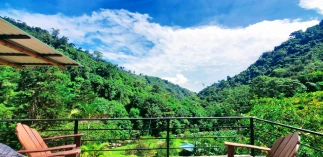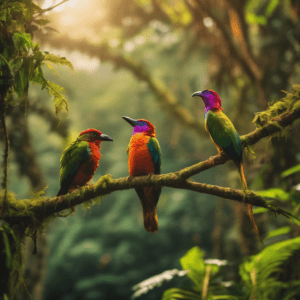While the resplendent quetzal or the vibrant scarlet macaw may steal the show, the Costa Rican highlands hold a special place for a subtler beauty: the Black-whiskered Vireo. This little songbird, though lacking the flashy plumage of its rainforest cousins, plays a vital role in the mountain ecosystems and offers a delightful surprise to those with a keen eye (and ear).
A Hidden Gem
The Black-whiskered Vireo (Vireo altiloquus) is a small passerine bird, typically measuring just 4.5 inches in length. Its upper body is an olive-green, accented with a grayish-brown crown. The underparts are white, with a hint of yellow on the flanks and under the tail. But the key feature that sets this vireo apart is its namesake – a bold black line extending from the bill along the side of its face, resembling a whisker.
Spotting a Black-whiskered Vireo can be a challenge. Unlike its more flamboyant relatives, it prefers the dense foliage of the mountain forests, particularly in areas with a good mix of hardwood trees and mangroves. Its movements are deliberate and unhurried as it meticulously searches for insects and small fruits among the leaves.
A Song Unheard
While elusive to the eye, the Black-whiskered Vireo is quite the vocalist. Its song, a clear and loud three-syllable phrase, often described as “whip-Tom-Kelly,” can be heard echoing through the mountain air. Unlike the Red-eyed Vireo, a close relative found in Central America, the Black-whiskered Vireo’s song is shorter and more abrupt.
A Partial Migrant
The Black-whiskered Vireo has a fascinating life cycle. While some populations in the Caribbean breed year-round, those in the northern parts of their range, including Costa Rica, are partial migrants. During the breeding season (typically from April to August), they can be found in the mountain forests, raising their young.
Come winter, the northern populations head south, seeking warmer climes in the Greater Antilles and northern South America. This migratory pattern allows them to take advantage of abundant food sources throughout the year.
A Vulnerable Guest
The Black-whiskered Vireo is currently classified as “Least Concern” by the IUCN. However, habitat loss due to deforestation and degradation is a growing threat. As more and more mountain forests are cleared for agriculture or development, the Black-whiskered Vireo, along with other forest-dependent species, faces the challenge of finding suitable nesting and foraging areas.
A Sight (and Sound) to Behold
While not as flashy as some of its Costa Rican neighbors, the Black-whiskered Vireo is a valuable addition to the mountain ecosystems. Its sweet song and its role as an insectivore contribute to the overall health of the forest. For those visiting our mountain retreat, keeping an ear out for the “whip-Tom-Kelly” call and patiently scanning the foliage might just reward you with a glimpse of this little gem.
For more information, please view our comprehensive guide about the birds of Costa Rica







